When it comes to photography techniques, 71-year old Do Anh Tuan, an award-winning photographer, a gold medalist at the 1996 International Photography Exhibition in Vietnam, is willing to sit down with just about anyone to share how he made his photos.
"Nowadays, almost no professional photographers would do this stuff that I do, and young ones would only experiment with the techniques on digital cameras without realizing that there are rules to these things. You just can't do multi-exposure randomly. To do an 8-layer exposure, you really have to get the images down in your head. You have to know what your main subject and complementary subjects are and arrange them on the frame using different brightness. The key to multi-exposure photos is to ensure that there is a focal point," said Tuan.
Tuan doesn't mince words. He explains things in detail to anyone who wants to listen, and he makes it sound easy, as if you could do it, too. But it's not easy, especially not to the 71-year-old Tuan, who has been visually-impaired for several years and blind for more than 2 years.
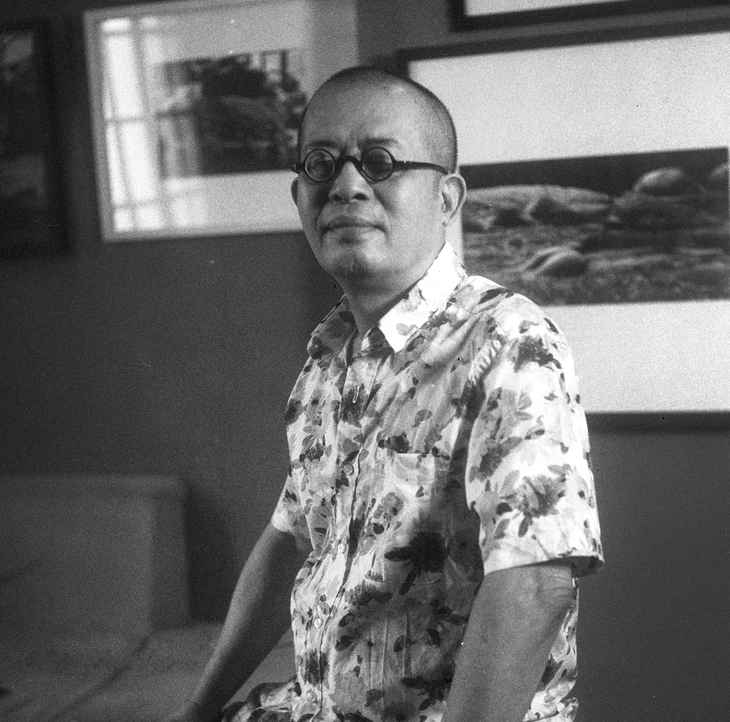 Award-winning photographer Do Anh Tuan (Photo: Do Anh Tuan) Award-winning photographer Do Anh Tuan (Photo: Do Anh Tuan) |
"I have always known that I had glaucoma, and that one day I wouldn’t see a thing anymore. Both of my parents worked in the medical field, and I’ve always liked learning about science. So, I knew," Tuan recalled.
Tuan held his first exhibition in 27 years in September, 2023, called “Breath”. The space was not terribly large and felt like a straight hallway rather than a room, but it still took one helper and a crane for the photographer to move around. 99% of the photos on display were in black and white, but it felt like they were done by two different photographers. One side of the room was filled with photos of the female body surrounded by ominous and blurry faces, which is what experts would call conceptual nude photography. On the other side, however, were photos of children pulling on each other’s shirts, old couples staring blankly into space, and old ladies sweeping the street.
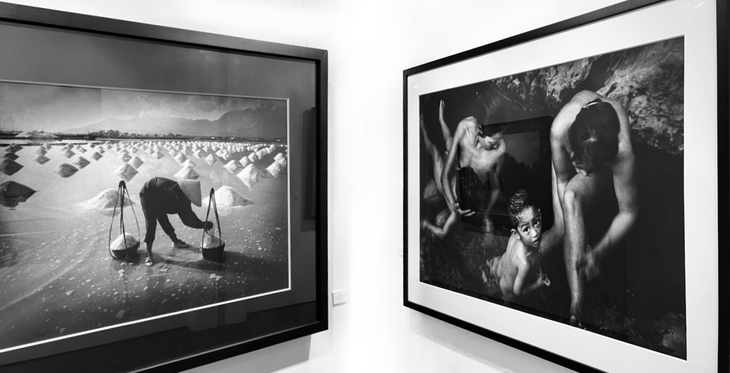 Two photos from the same exhibition, two different styles of photography (Photo: Do Anh Tuan) Two photos from the same exhibition, two different styles of photography (Photo: Do Anh Tuan) |
"In Do Anh Tuan's photos, I can see his depth. They tell me that the photographer isn't oblivious to life. They tell me that he quietly observes and shoots, and perfectly captures the essence of life," said a visitor to Tuan's exhibition
"Tuan displays his soul in the photos he exhibits. I can see who he is in these photos, and that moved me," said another visitor .
The photos felt surreal, and flooded you with questions. When asked whether he felt scared taking photos without being able to see them, Tuan said he didn't, adding that the photos on display were taken just 5 weeks before the exhibition.
"I wasn't scared. I’ve never felt scared. Sure, I thought I was unfortunate, with not-so-good eyes. Other people focus the camera faster and get a photo quicker than I can. But I have my ways. I practiced framing the photos so that even for street photography, I never have to crop the frame. 99% of my final products are exactly the size they were on the camera. I learned how someone would look 1.5 meters away from the camera with a 35mm, 20mm, or 50mm focal length," said Tuan.
Why isn't he scared? Or rather, how did he do it?
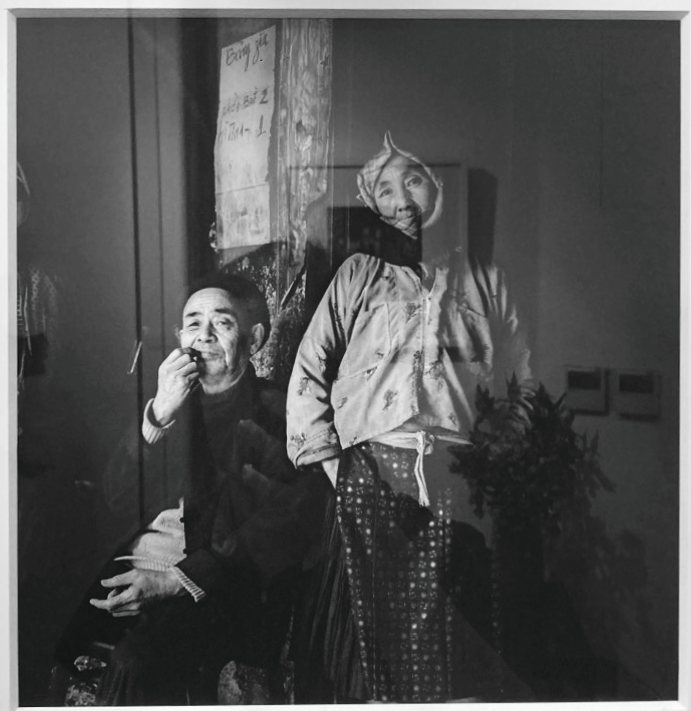 Photo of an old couple in black and white by Do Anh Tuan (Photo: Do Anh Tuan) Photo of an old couple in black and white by Do Anh Tuan (Photo: Do Anh Tuan) |
Blind photography, or photography by the visually impaired isn't new. There are blind photographers around the world, though you can count them on one hand. But taking blind photography is one thing. Holding an exhibition that features 27 works made in 5 weeks while being visually impaired is another.
One way to do this would be to simply recycle your old works, and indeed, about half of the exhibition were black and white street photos Tuan has taken in the past 27 years, before he was completely blind. He said he travelled a lot of find the subjects for his photos.
"I must have ridden through the Northwest Loop at least 300-400 times. Each trip was 1,500 km in length. That's not mentioning the 13 times I traveled across the country, 12 of which I was on my own. The shortest trip took me 1 month and 5 days, and the longest was like 2 and a half months, just taking photos. I was a full-time photographer by that point, so I had time," said Tuan.
One of Tuan's most widely exhibited photos, “Neighbors”, which won him 2 MILK Photos awards and a gold medal for International Photography in Hanoi in 1996, was made in his younger years. It was taken during one of his many trips across the country.
He told VOV: "The photo was taken in Bau Truc village, of the Cham ethnic group in Ninh Thuan. It's a traditional pottery village. I was stepping out from a pottery workshop when I saw a pregnant woman standing by the door. Bau Truc village at the time was very poor, and felt deserted, but still graceful. The woman was just cooling herself off as she watched her 2 daughters learn how to ride a bicycle. And I thought, that looks nice, and snapped one. That was the first photo."
"And then I heard a rustling noise from the side, and saw an old woman. Her back bent forward hard like a shrimp, and she even had a crane, but she walked incredibly fast. She was loud, too, as she walked towards the pregnant woman. I thought something was up and turned around and hid myself. I wanted this next photo to be natural and true. The old woman approached the pregnant lady, laugh loudly and touched her belly. They spoke in Cham so I didn't really understand, but in my head, I scripted out an imaginary conversation, where the old lady joked: Is this little one your idea or the father's idea? And then they both laughed." Tuan recalled.
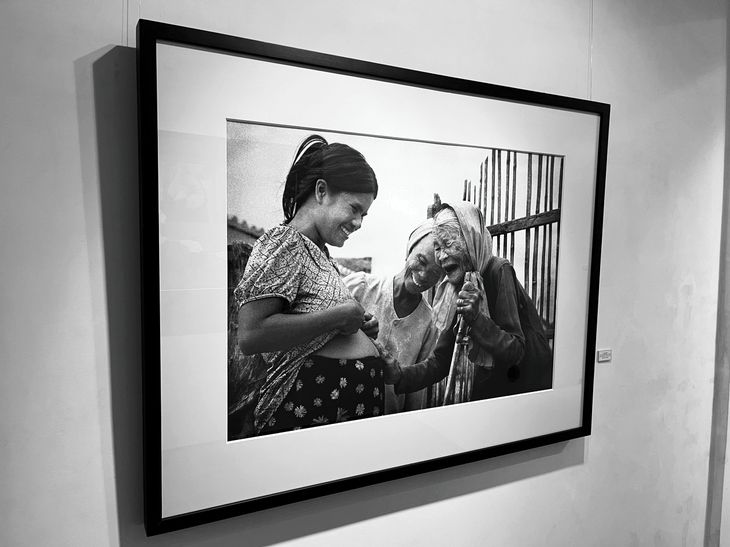 "Neighbors", taken on Do Anh Tuan's trip to Bau Truc village in Ninh Thuan province (Photo: Do Anh Tuan) "Neighbors", taken on Do Anh Tuan's trip to Bau Truc village in Ninh Thuan province (Photo: Do Anh Tuan) |
Tuan said he no longer does photos of ethnic minorities, which were what he shot for a good while after giving up on landscape photography. Prior to that he was a musician, he said: "I actually went to a music academy. But that route was a bit unfortunate. The first song I wrote was plagiarized by another musician. I was young so it was quite a shock. So, I gave up and irrationally hated music for 2 years."
But if there's one thing Tuan has been consistent about in his entire career, it’s his love for black and white photos.
He said: "The reason I chose black and white photography is because, to me, black and white photos are timeless. You take a black and white today, you like it and put it aside. A week later, you look back at it, you will still like it, maybe even more than before. And if you return to it after a year, the feeling will be even more incredible, and so on. In my experience, color photos are the exact opposite. Feelings for color photos to me decrease exponentially as time goes by."
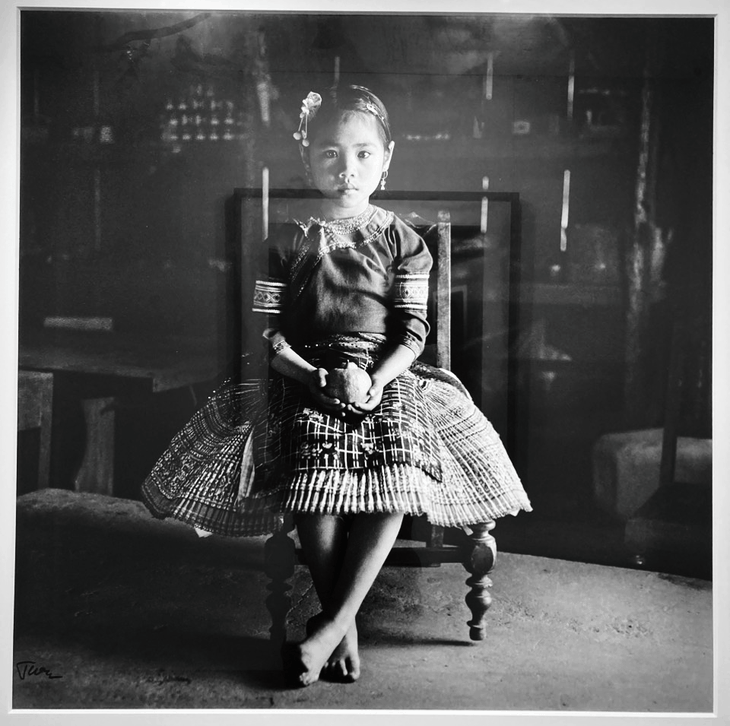 Black and white photo are timeless, said Do Anh Tuan. (Photo: Do Anh Tuan) Black and white photo are timeless, said Do Anh Tuan. (Photo: Do Anh Tuan) |
Do Anh Tuan is known as a black-and-white photographer. 26 out of 27 photos he displayed in his exhibition were black and white. Ironically, that means there is one color photo in his exhibition - and it's a special one.
"I haven't taken serious color photos in nearly 30 years, but sometimes one sneaks into my collection. The only one in color in my exhibition shows an old woman picking up trash. I took it on a visit to my friend's exhibition on My Khe beach, Da Nang, and I didn't plan on taking any photos on that trip," Tuan told VOV.
He continued: "That place was a beautiful beach. I used to stay with my friends in a beautiful house overlooking the beach. 10 people, including myself, would gather around and talk about photography and throw a party. We would wait for fishermen to return after sunset, pick whatever they had in their nets and make hotpots. It was a happy time. The house we stayed in was like something out of a Grimm’s fairy tale. They cleared the area some time ago and now the place is nothing but rubble."
"I told my friends a few years ago that I missed the place and wanted to visit it for old times’ sake. As I stood before a vast ruin of what used to be our hideout, I saw a skinny but beautiful old woman. She was picking beer cans and plastic from the rubble. I quietly followed her for a while, and when she got to where I wanted her to be, I greeted her loud and clear. She looked up and I took the shot."
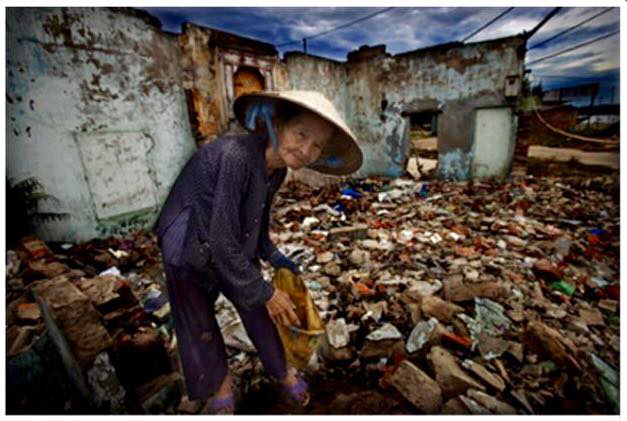 "One of my rare color photos (at a land clearing zone in District 3, Da Nang city)", wrote Do Anh Tuan in 2017. (Photo: Do Anh Tuan) "One of my rare color photos (at a land clearing zone in District 3, Da Nang city)", wrote Do Anh Tuan in 2017. (Photo: Do Anh Tuan) |
When asked Tuan whether he regretted not being able to travel and do photography of everyday life anymore, Tuan said: "The reason I named this exhibition "Breathe" was that I like how people naturally treat each other. Friendly. Respectfully. With lots of love. I like that. But if I'm forbidden from watching them, then I have to accept it."
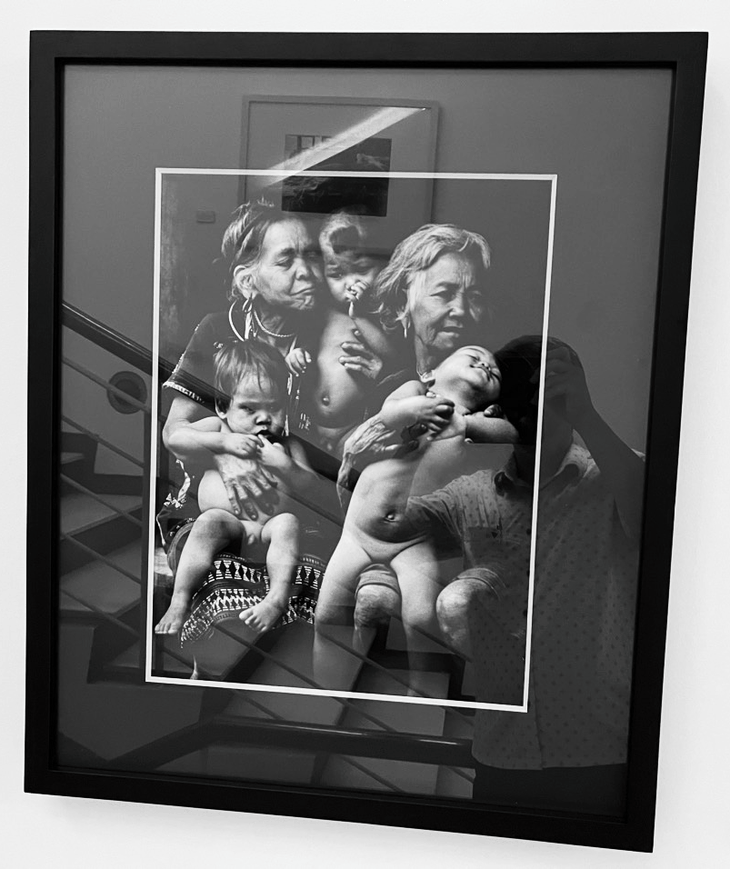 (Photo: Do Anh Tuan) (Photo: Do Anh Tuan) |
He said that all his practice all these years means he can do photography in his head.
"The photos are crystal clear in my mind, as if I was viewing them with my physical eyes. Every detail appears vividly. I think it was on the night of July 26. I couldn't sleep a wink that night, without feeling tired or having a headache. The photos you see in this gallery today came to me that night. I had an idea to do 3 photos of the same theme, one about life, love, and the friendship around me, with people's faces representing the good and the bad," said Tuan.
He added: "The second one about love, with a blurry nude figure of a woman surrounded by hands from all directions. The third one about friendship. I took a portrait of a beautiful young woman, surrounded by the faces of my friends, and each has their own expression. All three were done using multi-exposure."
That was how he finished his exhibition in 5 weeks and is how he plans to do photography from now on.
Tuan is 71 years old now. For nearly 50 years he knew that he would turn blind, all the while desperately pursuing film photography, which involves dark rooms and chemicals to develop film. He can't do street photography anymore.
"But I still want to do this. I must find the strength to do it, even if that means turning to another type of photography, more suitable to my condition. I’ll do still life, or concepts that require lots of thinking. I’ll adapt." Tuan said.
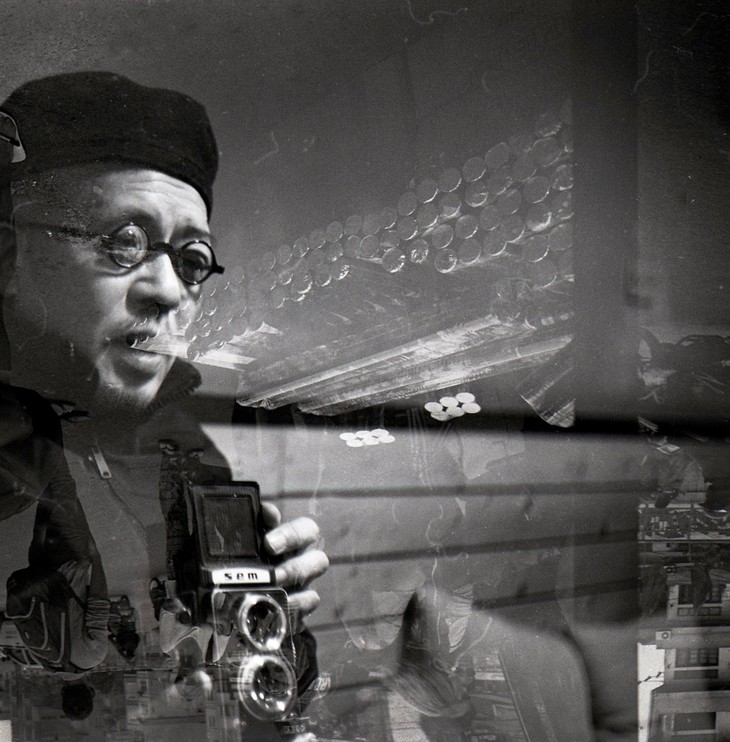 (Photo: Do Anh Tuan) (Photo: Do Anh Tuan) |
Tuan admitted that he's a bit of an extremist. He said he learned that from his idols, one of whom was the German composer Ludwig van Beethoven, who gradually turned deaf in his best years. Some of Beethoven's greatest masterpieces were produced after he turned completely deaf, so there's no reason for a blind photographer to give up.